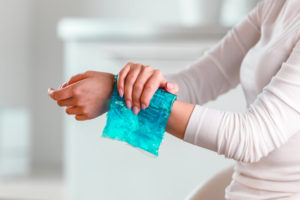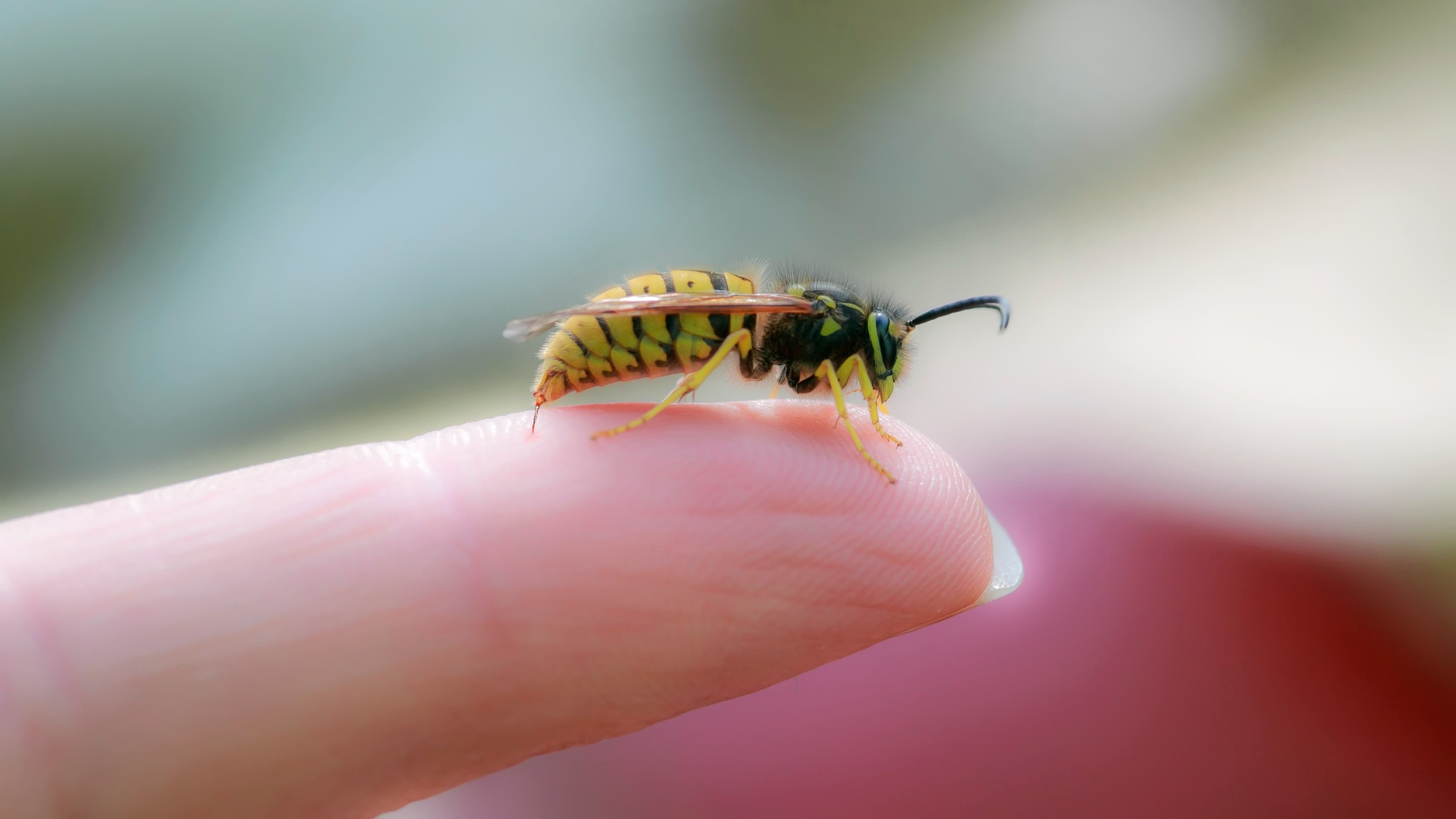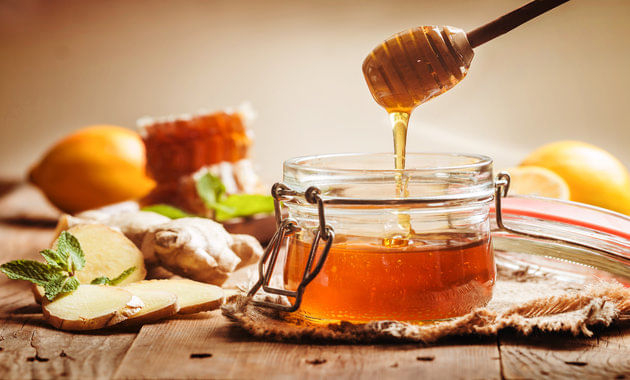Bee stings are a common occurrence, especially during warmer months when bees are more active. While most bee stings result in mild discomfort, such as pain, redness, and swelling at the sting site, they can be treated effectively with a combination of first aid measures and soothing remedies. This article explores effective solutions for managing bee stings, from immediate first aid steps to home remedies and medical treatments.

Immediate First Aid for Bee Stings
The first step in treating a bee sting is to address it promptly to minimize pain and prevent further irritation. Follow these steps immediately after being stung:
- Remove the Stinger Quickly
- Honey bees leave their stingers behind after they sting. The stinger contains venom sacs that continue to release venom into the skin.
- Use a flat object like a credit card or your fingernail to scrape the stinger out gently. Avoid pinching or squeezing the stinger, as this can inject more venom into the skin.
- Wash the Area
- Cleanse the affected area with soap and water to remove any residual venom and reduce the risk of infection.
- Apply Ice
- Wrap an ice pack or a bag of frozen vegetables in a cloth and place it on the sting site for 10–15 minutes at a time.
- Ice helps reduce swelling by constricting blood vessels and numbing the area.
- Avoid Scratching
- Scratching can worsen irritation and increase the risk of infection.

Over-the-Counter Medications
For additional relief from pain, itching, or swelling caused by bee stings, over-the-counter medications can be highly effective:
- Nonsteroidal Anti-Inflammatory Drugs (NSAIDs)
- Medications like ibuprofen (Advil) or naproxen (Aleve) help reduce inflammation and alleviate pain.
- Antihistamines
- Oral antihistamines such as diphenhydramine (Benadryl) or loratadine (Claritin) can relieve itching and swelling caused by an allergic reaction to bee venom.
- Topical Corticosteroids
- Hydrocortisone cream can be applied directly to the sting site to reduce redness, itching, and inflammation.
- Calamine Lotion
- Calamine lotion provides soothing relief for itchy skin caused by insect bites or stings.

Home Remedies for Bee Stings
Several natural remedies have been traditionally used to soothe bee sting symptoms such as pain, swelling, redness, and itching. While some lack strong scientific backing, many people find them helpful:
1. Honey
- Honey has natural antibacterial properties that may help prevent infection while soothing inflammation.
- Apply a small amount of honey directly onto the sting site and cover it with a loose bandage for up to an hour before rinsing off.
2. Baking Soda Paste
- Baking soda is believed to neutralize bee venom due to its alkaline nature.
- Mix one teaspoon of baking soda with enough water to form a thick paste.
- Apply this paste onto the sting site for about 10 minutes before rinsing off with cool water.
3. Apple Cider Vinegar
- Apple cider vinegar is thought to neutralize bee venom because of its acidic properties.
- Soak a cotton ball in diluted apple cider vinegar and apply it directly onto the sting site for several minutes.
- Alternatively, you can soak the affected area in a bowl of diluted apple cider vinegar if possible.
4. Aloe Vera Gel
- Aloe vera is known for its anti-inflammatory properties that help soothe irritated skin.
- Apply fresh aloe vera gel extracted from an aloe leaf or use store-bought aloe vera gel directly on the sting site.
5. Witch Hazel
- Witch hazel acts as an astringent that reduces swelling and soothes irritated skin.
- Dab witch hazel onto the affected area using a cotton ball or clean cloth.
6. Toothpaste
- Some people claim that toothpaste helps neutralize bee venom due to its alkaline pH level.
- Apply a small dab of toothpaste onto the sting site for several minutes before wiping it off gently with cool water.
Essential Oils
Certain essential oils are believed to have antiseptic or anti-inflammatory properties that may provide relief from bee sting symptoms:
- Tea Tree Oil
- Known for its antimicrobial effects, tea tree oil may help prevent infection at the sting site.
- Lavender Oil
- Lavender oil has calming properties that may reduce pain and inflammation associated with insect bites or stings.
- Thyme Oil
- Thyme oil contains compounds that exhibit antibacterial activity which might protect against infections at wound sites.
Before applying essential oils:
- Dilute them with carrier oils like olive oil or coconut oil (use one drop of essential oil per four drops of carrier oil).
- Perform a patch test on your skin beforehand to check for allergic reactions.

When Medical Attention Is Necessary
While most bee stings can be managed at home using first aid measures and remedies mentioned above, there are situations where medical attention is required:
- Signs of Severe Allergic Reaction (Anaphylaxis):
- Difficulty breathing
- Swelling beyond localized areas (e.g., face, throat)
- Rapid heartbeat
- Dizziness or fainting
- Multiple Stings:
- Being attacked by multiple bees increases exposure to venom which could lead severe systemic reactions even without allergies present previously! 3 Persistent Symptoms: If Pain persists longer than week consult doctor

Top Authoritative Sources Used in Answering this Question
- Centers Disease Control Prevention
Bee stings can be a painful and alarming experience for many people. While most bee stings are harmless and can be treated effectively at home, understanding the right steps for relief can make all the difference. In this comprehensive guide, we will explore the symptoms and immediate reactions of bee stings, essential first aid steps, home remedies, over-the-counter medications, and much more. With adequate knowledge and preparation, you can manage the discomfort associated with bee stings and take preventive measures to avoid future incidents.
Understanding Bee Stings: Symptoms and Immediate Reactions
Bee stings occur when a bee injects venom into the skin through its stinger. This venom contains proteins that affect skin cells, the immune system, and the nervous system, leading to various symptoms. The immediate reaction to a bee sting is often a sharp pain at the sting site, which is a result of the venom entering the body. This pain can be accompanied by other symptoms such as redness, swelling, and itching within a few minutes of being stung.
In most cases, the body’s response to bee venom triggers an inflammatory reaction. This response is particularly pronounced in individuals who may be allergic to bee stings. For these individuals, symptoms can escalate quickly to include hives, difficulty breathing, rapid heartbeat, or swelling of the face and throat. The severity of these symptoms can vary widely from person to person, and understanding one’s sensitivity to bee stings is critical for effective treatment.
The location of the sting can also impact the severity of the symptoms. Areas rich in nerve endings, such as the hands, feet, and face, can experience more intense pain and swelling. In contrast, stings to less sensitive areas may result in milder discomfort. Regardless of the location, it is essential to monitor any reaction closely, especially if there is a history of allergic reactions to bee stings.
Moreover, it is important to note that multiple stings can lead to a cumulative effect of the venom, which can significantly increase the likelihood of a severe reaction. Therefore, individuals who are stung multiple times should be vigilant for any signs of an allergic response, as this may require immediate medical assistance. Understanding these symptoms is the first step in effectively managing the aftermath of a bee sting.
Lastly, psychological reactions to bee stings can also occur. The fear of being stung, known as apiphobia, can result in anxiety and panic attacks upon encountering bees. This psychological aspect should be acknowledged, as it can influence how one reacts to a sting and the subsequent treatment process. Preparing mentally and physically for potential bee encounters can be an essential part of managing bee sting reactions.

Essential First Aid Steps for Bee Sting Relief
When faced with a bee sting, immediate first aid is crucial for minimizing pain and preventing complications. The first step is to remove the stinger, as it can continue to release venom. Using a pair of tweezers or the edge of a credit card, gently scrape the stinger out of the skin. Avoid pinching the stinger, which can squeeze more venom into the wound. It is vital to act quickly, as the longer the stinger remains in place, the more venom will be injected.
Once the stinger is removed, the next step is to clean the area with soap and water. This helps to prevent infection and reduces the risk of complications. After cleaning, applying a cold compress or ice wrapped in a cloth can help to numb the pain and minimize swelling. Applying ice for about 10-15 minutes at a time can be beneficial in managing the immediate symptoms.
After addressing the sting site, it is essential to monitor for any signs of an allergic reaction. If symptoms such as difficulty breathing, swelling in the throat, or rapid heartbeat occur, it is crucial to seek emergency medical assistance immediately. For individuals with a history of severe allergic reactions, carrying an epinephrine auto-injector (EpiPen) is advisable. This device can provide life-saving medication in the event of anaphylaxis.
In cases of mild reactions, over-the-counter pain relievers, such as ibuprofen or acetaminophen, can be taken to alleviate pain and reduce inflammation. Following package instructions for dosage is essential to ensure safety. Additionally, topical creams with hydrocortisone or calamine lotion can be applied to relieve itching and swelling.
Furthermore, it is beneficial to keep the affected area elevated to help reduce swelling. This can be particularly effective for bee stings on limbs. Elevating the area can promote better blood flow and decrease the pooling of fluids that leads to swelling.
Finally, documenting the reactions and treatments following a bee sting can provide valuable information for future encounters. Keep track of any symptoms that occur, their severity, and the treatment methods that were effective. This record can be useful for healthcare providers in case of future stings or allergic reactions.
Home Remedies: Natural Solutions for Bee Sting Pain
Home remedies can provide effective relief from the pain and discomfort associated with bee stings. One of the most popular natural treatments is the use of vinegar, particularly apple cider vinegar. Its acidity can help neutralize the alkaline venom of the bee sting, potentially reducing pain and inflammation. Soaking a cotton ball in vinegar and applying it to the sting site for about 15-20 minutes can offer relief.
Another effective remedy is the application of essential oils. For instance, tea tree oil is known for its anti-inflammatory and antiseptic properties. Diluting a few drops in a carrier oil, such as coconut oil, and applying it to the sting site can help soothe irritation and promote healing. Similarly, lavender oil is another soothing option due to its calming scent and anti-inflammatory benefits.
A paste made from baking soda and water can also serve as an effective home remedy. Mixing equal parts baking soda and water to form a paste and applying it to the sting site can help neutralize acidity and reduce itching. Allow the paste to dry before rinsing it off with cold water. This remedy is particularly beneficial for addressing the immediate discomfort caused by bee stings.
Another natural remedy is the use of activated charcoal. Known for its detoxifying properties, activated charcoal can help draw out toxins and reduce inflammation. Mixing activated charcoal powder with water to form a paste and applying it to the affected area can provide relief from swelling and pain.
In addition to these remedies, herbal treatments can also be beneficial. For example, applying a fresh basil leaf to the sting site can provide a cooling sensation and anti-inflammatory effects. Alternatively, the juice of a freshly squeezed lemon can help reduce pain and swelling due to its citric acid content.
Using honey, which is known for its natural healing properties, can also be effective. Applying a small amount of honey to the sting site not only provides soothing relief but may also help prevent infection due to its antimicrobial properties. Honey can be left on the skin for a few hours before rinsing off.
Lastly, keeping the affected area clean and hydrated is vital for the healing process. Using aloe vera gel can be an excellent choice, as it is known for its soothing and hydrating qualities. Applying aloe vera gel directly to the sting site can help cool the area and promote healing, making it a great addition to your home remedy arsenal.

Over-the-Counter Medications: What to Consider
Over-the-counter (OTC) medications can play a significant role in managing bee sting symptoms, especially if home remedies do not provide sufficient relief. Pain relievers such as ibuprofen or acetaminophen can help reduce pain and inflammation associated with bee stings. Ibuprofen is particularly effective as it not only alleviates pain but also reduces swelling, making it a preferred choice in many cases.
When selecting an antihistamine, it is essential to consider the symptoms. Antihistamines such as diphenhydramine (Benadryl) can help reduce itching and swelling caused by the body’s histamine response to the bee venom. These medications work by blocking histamine receptors, which can alleviate allergic reactions to a bee sting. It is advisable to follow the dosage instructions on the package and be aware of potential drowsiness associated with some antihistamines.
Topical corticosteroid creams, such as hydrocortisone, are another OTC option for reducing inflammation and itching. These creams can be applied directly to the sting site and are particularly effective for localized reactions. They work by suppressing the immune response and reducing inflammation, providing relief from discomfort.
For those who prefer a multi-symptom approach, combination medications that include pain relievers and antihistamines can also be beneficial. These products can address pain, itching, and swelling simultaneously, providing comprehensive relief.
It is also essential to read the labels of any OTC medications carefully to ensure there are no contraindications with any existing medications or health conditions. Consulting a healthcare provider or pharmacist can provide additional guidance if there are concerns about specific medications.
Another consideration is the availability of topical treatments, such as calamine lotion. Known for its soothing properties, calamine lotion can be applied directly to the sting site for relief from itching and irritation. This lotion creates a protective barrier on the skin, helping to dry out any oozing and relieve discomfort.
While OTC medications can be effective, they should not be used as a substitute for professional medical advice, especially for individuals with a history of severe allergic reactions. Anyone who experiences symptoms of anaphylaxis should seek emergency medical attention immediately.
Lastly, it is important to keep in mind that not all over-the-counter products are suitable for everyone. Individuals with specific allergies, such as to certain active ingredients in medications, should exercise caution and consult with a healthcare professional before using them.
Also check these out
Bee Sting Swelling After 48 Hours: Should You Be Concerned?

The Bee Sting Book: A Literary Insight

How to Treat a Jellyfish Sting: A Comprehensive Guide

Queen Wasp Lifespan: Understanding Her Role and Survival Strategies

Flea Bites Unveiled: Identification, Treatment, and Prevention Guide


